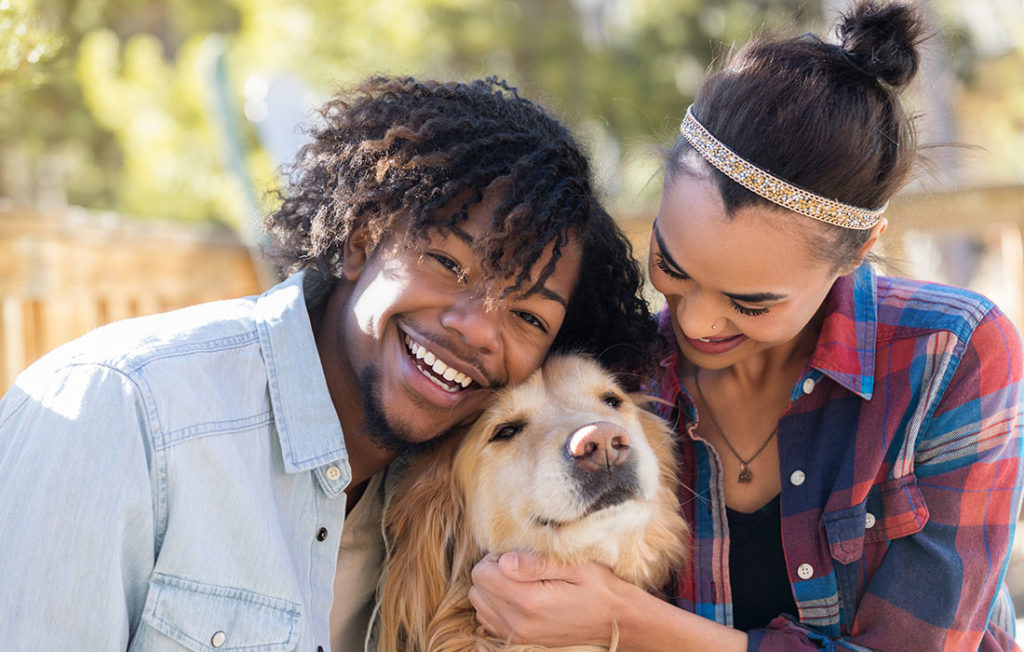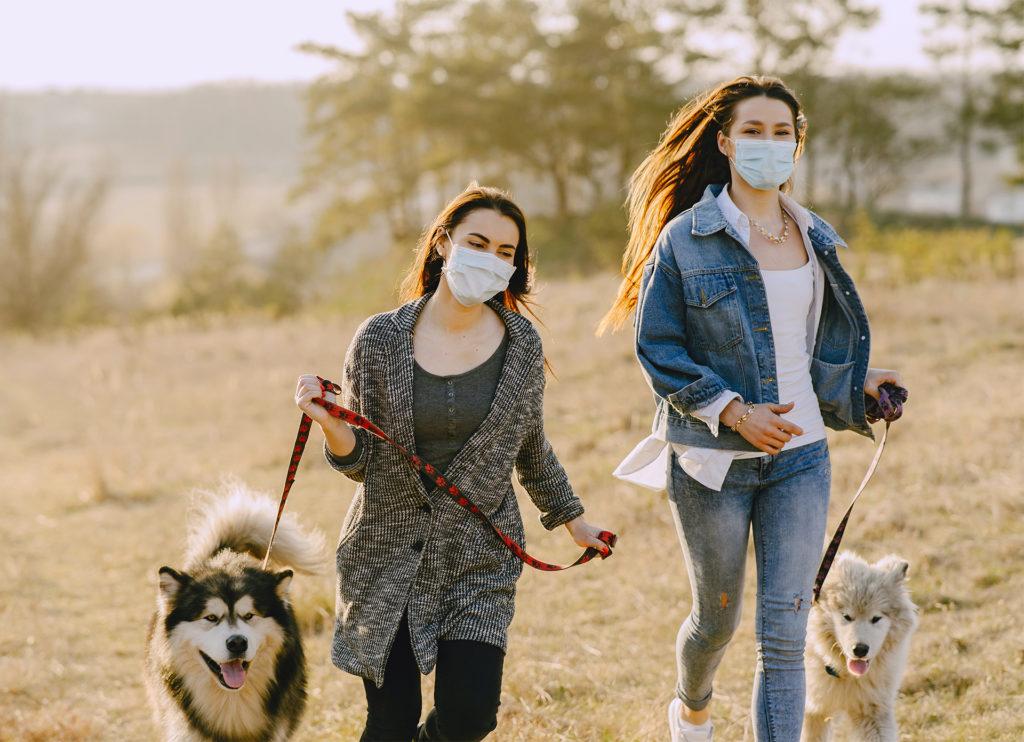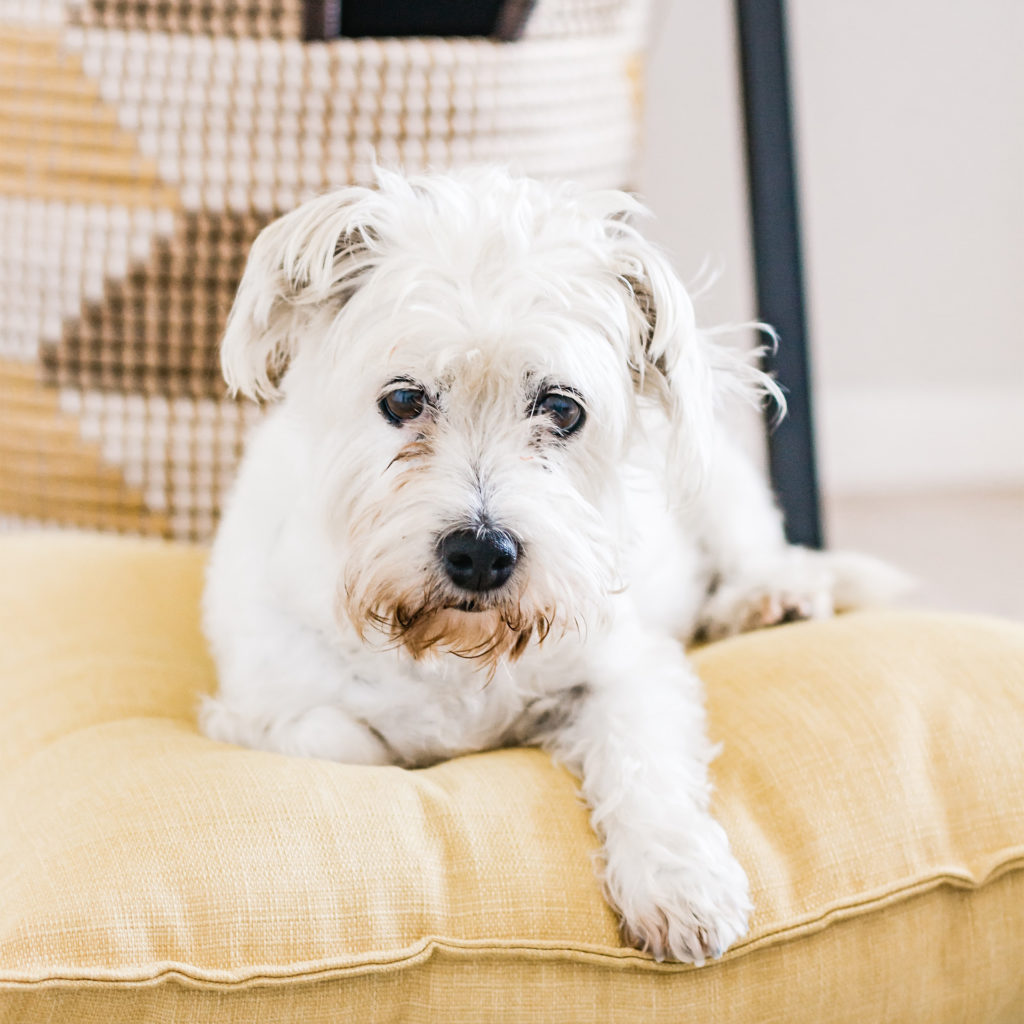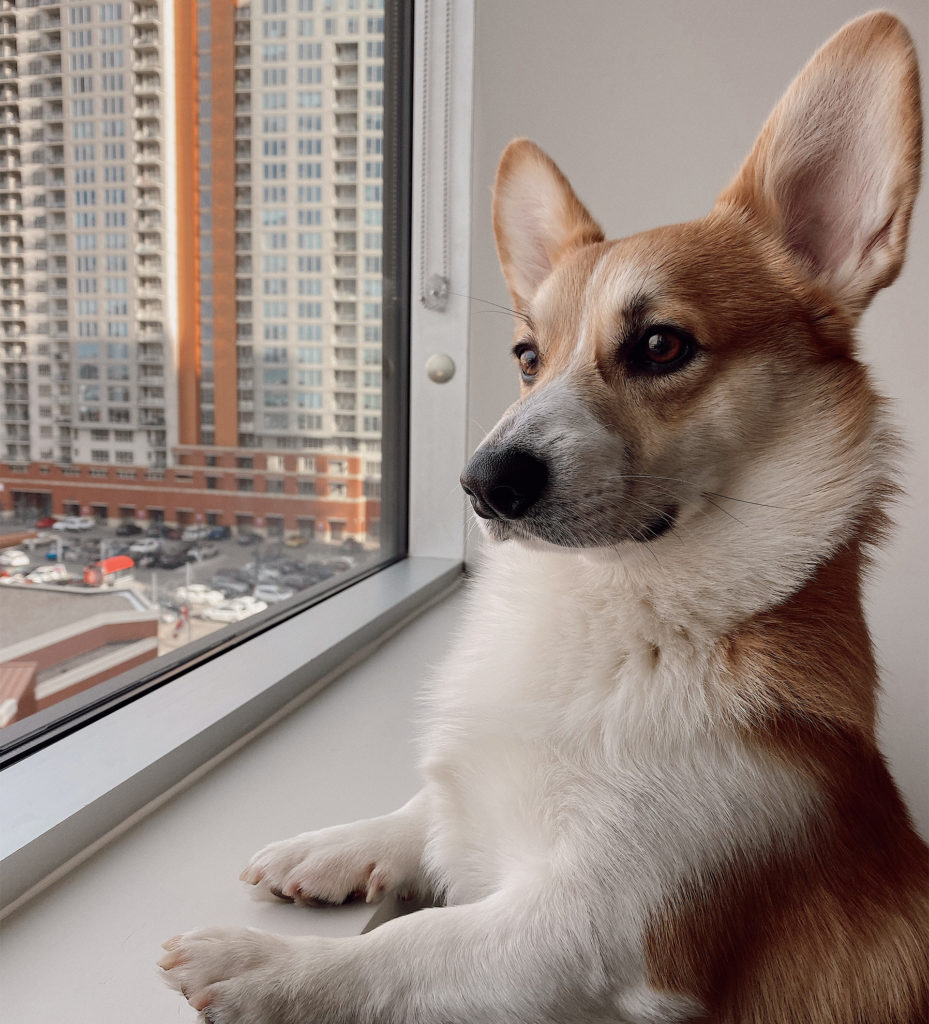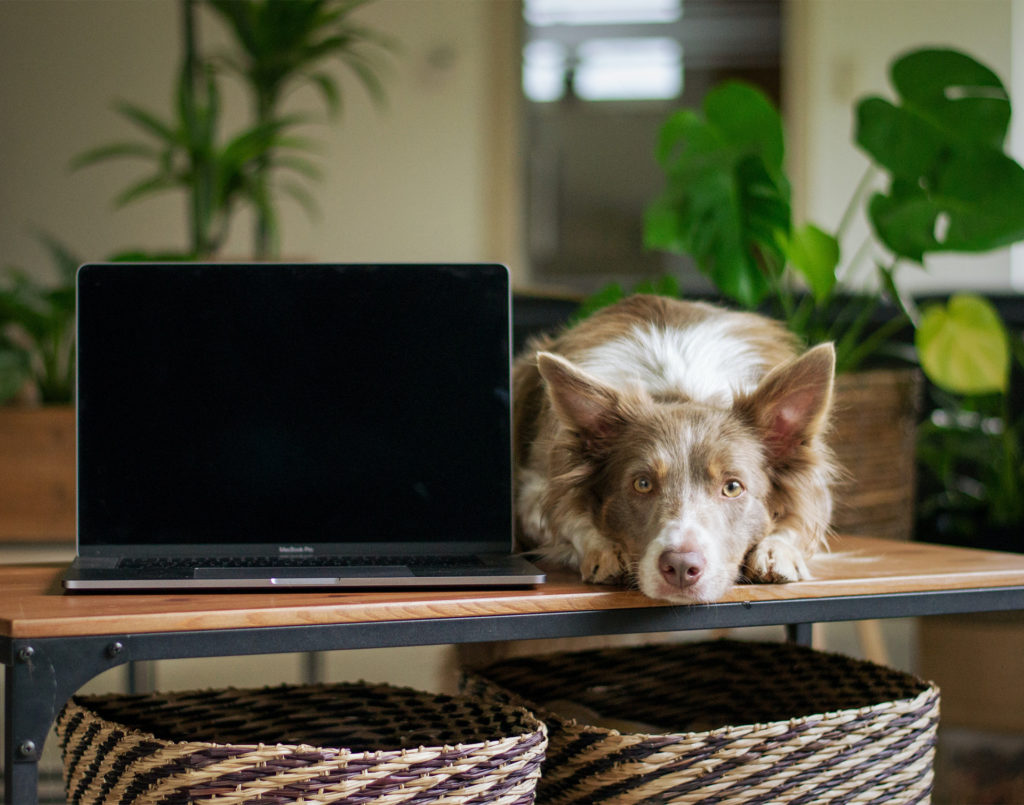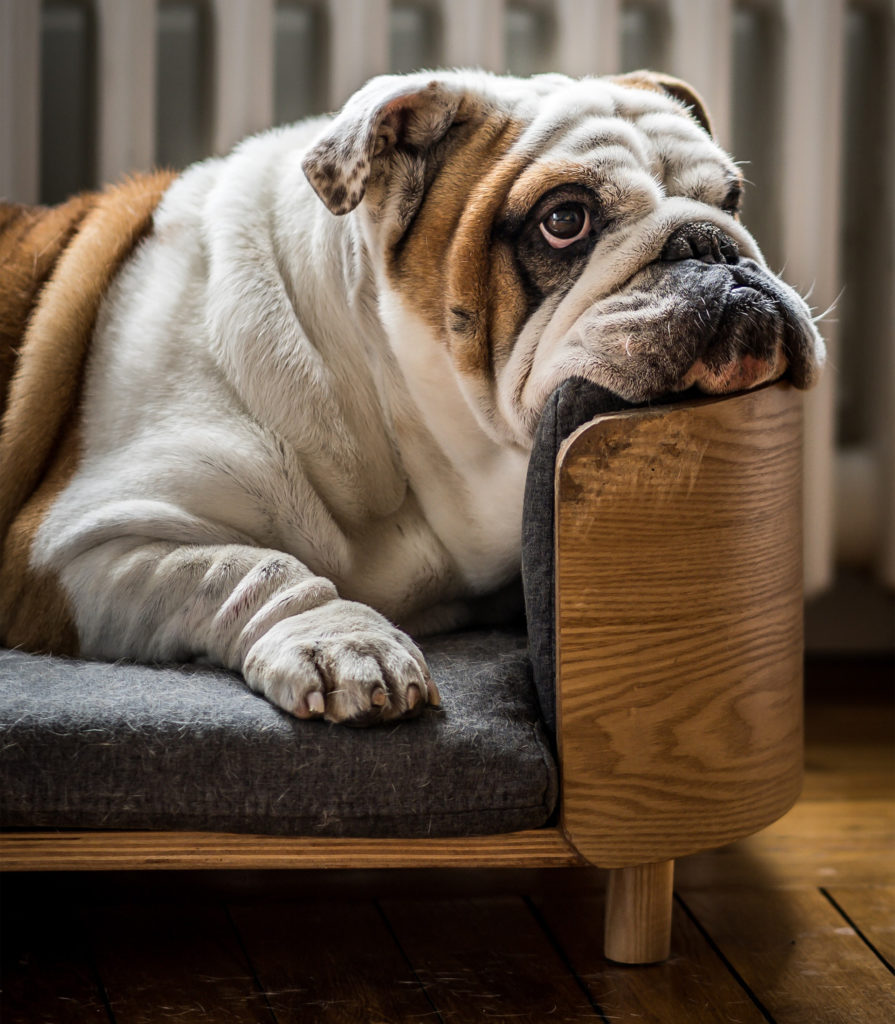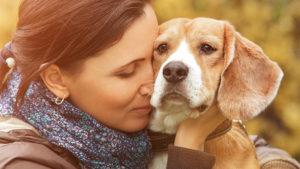Help Your Dog Face A Post Lockdown World – A Vet’s Guide
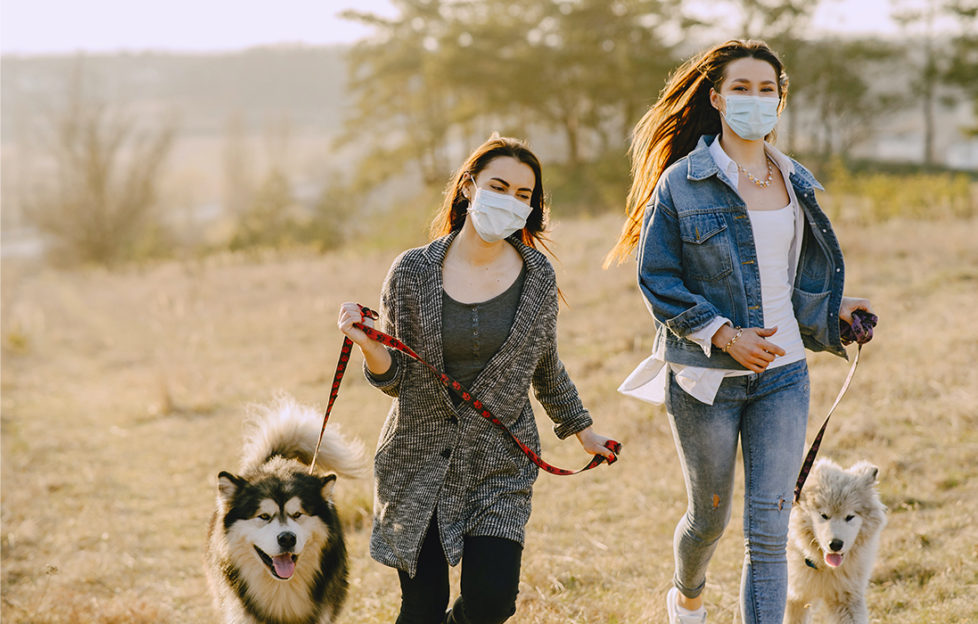
Since the UK went into lockdown, our dogs have got used to a lot more walks, attention and time at home. As restrictions begin to ease and many of us head back to the office, we will have to adjust again to our normal routines – and our pets will too.
As part of their Dog Difference Report, Sean McCormack, Head Vet from dog food company tails.com has put together a guide for dog owners worried about helping our dogs get used to the world after lockdown, such as mandatory face coverings while out and about.
Helping dogs get used to face coverings
Face coverings are now mandatory on public transport and in shops. Many of us are taking time to adapt to this new way of life – and many dogs will also find it difficult to adjust.
Dogs are very good at reading body language and can detect even tiny changes in facial expressions. Masks stop a dog from being able to read all of our facial expressions and this can make them scared or anxious. Certain face coverings may also muffle or change the sound of your voice which can confuse a dog.
Here’s how you can train your dog to not fear face masks or coverings.
Step 1: First get them used to masks at home, or somewhere they are able to relax. Hold a hand over your mouth and nose for a moment, then give your dog a treat. Repeat this several times so they get used to your face being slightly obscured – and that this means a treat is coming their way.
Step 2: Next, keep talking to your dog as you cover your mouth and nose. This gets them used to hearing you speak without seeing your mouth moving. For dogs, seeing our faces move is very important, so this might take a little time. Repeat this several times until your dog is comfortable listening to you talking with your face covered.
Step 3: Use a scarf or similar and cover your mouth and nose for a little longer. Reward your dog, so they learn that this isn’t anything to worry about.
Step 4: If your dog still appears relaxed, start to move around the room while your face is covered. Keep talking and rewarding them with treats as you go.
Step 5: Introduce a face mask. Let your dog see you putting it on, then talk to them and move around as before while still rewarding them with treats. This teaches that seeing people walking and talking in facemasks isn’t anything to be concerned about.
Step 6: Once your dog is comfortable with you wearing a face mask, start again from the beginning with others in the home. Your dog will soon feel comfortable no matter who has their face covered.
Step 7: At this stage you can try outside in your garden or the street. This will help your dog get used to face masks being worn by different people in different environments. Repeat any steps necessary, so your dog is always relaxed. Give your dog a treat every time you see someone wearing a mask. Over time, with plenty of rewards, they’ll soon be taking people in face masks in their stride.
Helping pets adjust as we return to work
Over the past few months of COVID-19 lockdown, your dog has probably got used to you being home all the time. Even more so for dogs that were adopted during the pandemic.
However, as the UK begins to reopen and people return to the workplace, dog owners have the extra task of helping their dog get used to being left alone in the house again.
Sean McCormack shares his top tips on how to help our pets adjust to being alone for longer.
Set up a routine
Start to give your pet alone-time each day. This is a very important step, so when you transition to working outside the home again, it is less of a shock. Go into a different room and close the door, or simply try not to give your dog any attention for a period of time.
If you notice your dog being clingy during your work hours, try to ignore them or walk away.
Get them used to you physically leaving the house
It’s important to help your dog become familiar with the new routine of you going to work. The best way to introduce this is to leave the house several times a day. Each time, gradually increase the time that you are away. When you return, greet and play with your dog for a few minutes.
If you can, it is a good idea to start this transition training several weeks before you return to work.
Get them used to a crate
If your dog is crate trained, this is a good opportunity to re-start crating them again for short intervals during the day. Pet parents can also put their pet into a crate or secluded room and designate that as the safe zone.
Puppy-proof your house
Whether your dog is 8 weeks or 8 years old, their behaviour could regress and leave your house a mess!
Close off areas your pooch could potentially get into trouble in. Remove objects and furniture items that can be destroyed. This will not only keep your pooch safe but also reduce pet owner stress levels.
Walk your pooch before work
Getting up earlier will allow for you to give your pet a walk before you leave. Try a longer walk, a short jog, or any activity that could burn lots of energy. Then they’re likely to be more calm and less destructive while you are away.
Create a calming environment
A calm environment can encourage calm behaviour. Try playing soft classical music or smooth jazz while you’re not at home. Also consider pheromones, such as an electric diffuser, to provide a relaxing scent for your dog throughout the day.
Leave them some creature comforts
Make sure your dog has their favourite toys available. If they are struggling with you being gone for a longer period, try leaving the radio or television on.
A puzzle toy filled with treats can provide a mental challenge and tasty rewards. Chew toys can also be filled with treats for your dog to work on throughout the day. You can freeze a prepared chew toy so it lasts longer.
Look into doggie daycare
Whether or not your dog is struggling being home alone, doggie daycare is a great option to socialise and play.
Get into the right mindset
Prepare to be stressed and feel guilt when your dog starts to whine the second you leave the house. This is a transition for everyone, you included. You’ll need to manage your own emotion and mindset before you can manage your dog’s.
You may have to revisit some training as your dog goes through the transition period. Be patient; your pooch may become more vocal, destructive or act out during this time. But if you revert to the normal routine you had prior to lockdown, they will transition far more quickly.
However if your previous routine wasn’t working with your dog, then this is a perfect opportunity to start a new one!
How Long Can You Leave Your Dog Alone?
Four hours is the longest dogs should routinely be left alone for, but it depends on how old they are and what they are used to. Four hours would generally be too long for a very active dog or young puppy but might be fine for an older, more placid dog.
Sean McCormack of Tails.com advises, “Occasionally you might have to leave your dog alone for longer periods. This could lead your dog to be destructive around the house as they become anxious or bored. It is really important to leave your dog with plenty of interactive toys or feeders to keep them entertained.
“It’s really important not to punish dogs for any destructive behaviour or for having accidents in the house. Punishing them will make them feel worse and will deter them from their training.
“If you can, it would be beneficial to go home at lunchtime. The time your dog is left alone won’t feel as long. Perhaps a neighbour or friend could visit occasionally throughout the day?
“If your dog struggles with being left alone and develops severe separation anxiety, consider hiring a professional dog walker or pet sitting service.”
Stay home… or take your dog to work?
Meanwhile, new research from premium raw pet food brand Natural Instinct discovered that 75% of dog owners would feel happier heading back into the workplace after lockdown if they could bring their dog with them.
The survey of 2,000 UK dog owners delved into the lives of the nation’s pooches since lockdown, to discover more about separation anxiety as the UK population slowly returns to work.
- 77% of dog owners are concerned about being separated from their pet when they return to their workplace after lockdown
- 65% feel they have built a closer bond with their dog since lockdown began
- 42% of owners have noticed positive changes in their dog during lockdown
- 26% hope to work from home full time from now on to be with their dog. A further 21% said they would work from home if their boss let them.
1 in 4 (26%) do admit however that their dog needs more attention than they did before, with 22% revealing that their dog follows them around all the time.
Respondents spent on average a total of £38 on new items for their dog, increasing to £60 in London.
Getting to know you…
Lockdown has also given dog owners an opportunity to learn more about their dogs, the Natural Instinct findings show.
- Nearly half (46%) say they are more knowledgeable about their dog’s behaviour and character
- 37% learned more about their dog’s health and fitness
- 28% has greater understanding of their dog’s diet and nutrition.
Kirsten Dillon, animal behaviourist and canine specialist comments, “One of the positives to come out of lockdown is dog owners increased understanding of their pet’s behaviours and needs. It has been a unique experience for everyone, including our canine friends, and returning to the workplace will not be easy.”
For more advice on coping with heading back to work, you can read Kirsten’s top tips here.

